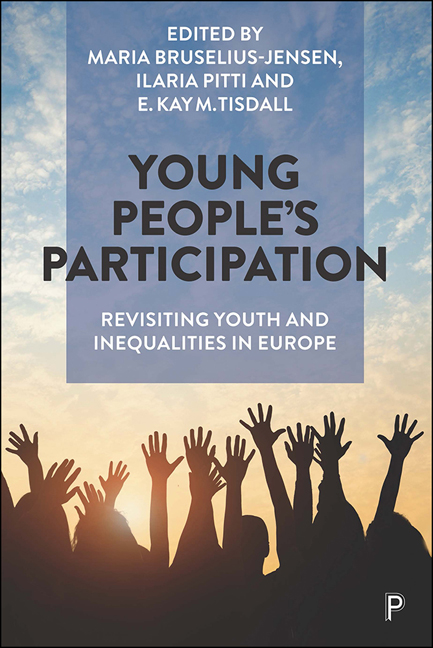Book contents
- Frontmatter
- Contents
- List of figures and tables
- Notes on contributors
- Acknowledgements
- 1 Revisiting young people's participation: an introduction
- PART I Young people's experiences of participation and engagement
- PART II Current state and conditions for young people’s participation: critiques and trends
- PART III Broadening participation: young people's own approaches to participation
- PART IV New opportunities for young people's participation: facilitating new forms of youth participation
- Index
14 - Journey mapping as a method to make sense of participation
Published online by Cambridge University Press: 18 December 2021
- Frontmatter
- Contents
- List of figures and tables
- Notes on contributors
- Acknowledgements
- 1 Revisiting young people's participation: an introduction
- PART I Young people's experiences of participation and engagement
- PART II Current state and conditions for young people’s participation: critiques and trends
- PART III Broadening participation: young people's own approaches to participation
- PART IV New opportunities for young people's participation: facilitating new forms of youth participation
- Index
Summary
This chapter explores how journey mapping as a qualitative research method allows young people on the edge of society to reflect on and make sense of their engagement in different youth projects. The method provides young people with the time, space and means to explore the participatory activities they engage in and to map the multiple ways they interact with the often messy, multi-sensual and frictional youth life on the edge of society. This approach to journey mapping is inspired by cultural researcher Roz Stewart-Hall (hereafter and in the References quoted as Hall). She developed the method to address a critique of how project evaluations seldom carried any meaningful insights into what makes a difference to the participants as well as in broader explorations of what it means to be a young person on the edge of society (Hall, 2005).
Key findings
• Journey mapping is a way to invite young people on the edge of society to (re)define and negotiate that which makes sense to them when they engage in participatory activities.
• The method emphasises the significance of a space for young people on the edge of society to reflect on their engagement and participation in adult-led programmes.
• The method promotes a multiplicity of insights into youth lives on the edge of society rather than a unifying overview.
• The method argues that this multiplicity can lead to new questions and understandings of what matters, when young people on the edge of society engage in participatory activities.
• The method can easily be employed in arenas other than research, in order to increase and strengthen knowledge exchanges between professionals and young people on the edge of society.
Qualitative, participatory-driven research methods
Qualitative, participatory-driven research methods are at the core of much research with children and young people. Spanning a highly diverse field, participatory methods are characterised by an emphasis on doing research with children and young people rather than on them, both as a way to generate unique types of data and to understand better the meanings, realities and experiences of children and young people. Nevertheless, the field has gained new experiential energy over the past few decades, with digital cameras, digital recorders, smart phones, iPads, computers and a variety of visual and audio production software becoming available and integrated into the everyday practices of adult researchers, children and young people.
- Type
- Chapter
- Information
- Young People’s ParticipationRevisiting Youth and Inequalities in Europe, pp. 235 - 254Publisher: Bristol University PressPrint publication year: 2021



